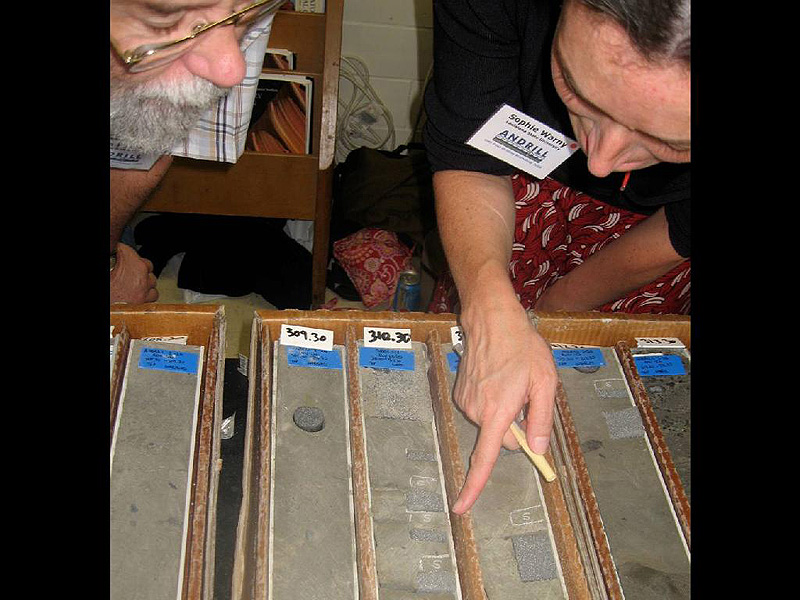Getting to the Core of the Matter – Palynologist and study co-author Sophie Warny (Louisiana State University) and Ian Raine (GNS, New Zealand), examine some of the ANDRILL sediment core samples used in the Nature Geoscience Antarctica study. Warny is pointing at one of the intervals rich in pollen and algae found at around 1,017 feet (310 meters) below the seafloor. (Image credit: Louisiana State University)
Home Getting to the Core of the Matter – Palynologist and study co-author Sophie Warny (Louisiana State University) and Ian Raine (GNS, New Zealand), examine some of the ANDRILL sediment core samples used in the Nature Geoscience Antarctica study. Warny is pointing at one of the intervals rich in pollen and algae found at around 1,017 feet (310 meters) below the seafloor. (Image credit: Louisiana State University) Getting to the Core of the Matter - Palynologist and study co-author Sophie Warny (Louisiana State University) and Ian Raine (GNS, New Zealand), examine some of the ANDRILL sediment core samples used in the Nature Geoscience Antarctica study. Warny is pointing at one of the intervals rich in pollen and algae found at around 1,017 feet (310 meters) below the seafloor. (Image credit: Louisiana State University)
Getting to the Core of the Matter – Palynologist and study co-author Sophie Warny (Louisiana State University) and Ian Raine (GNS, New Zealand), examine some of the ANDRILL sediment core samples used in the Nature Geoscience Antarctica study. Warny is pointing at one of the intervals rich in pollen and algae found at around 1,017 feet (310 meters) below the seafloor. (Image credit: Louisiana State University)



